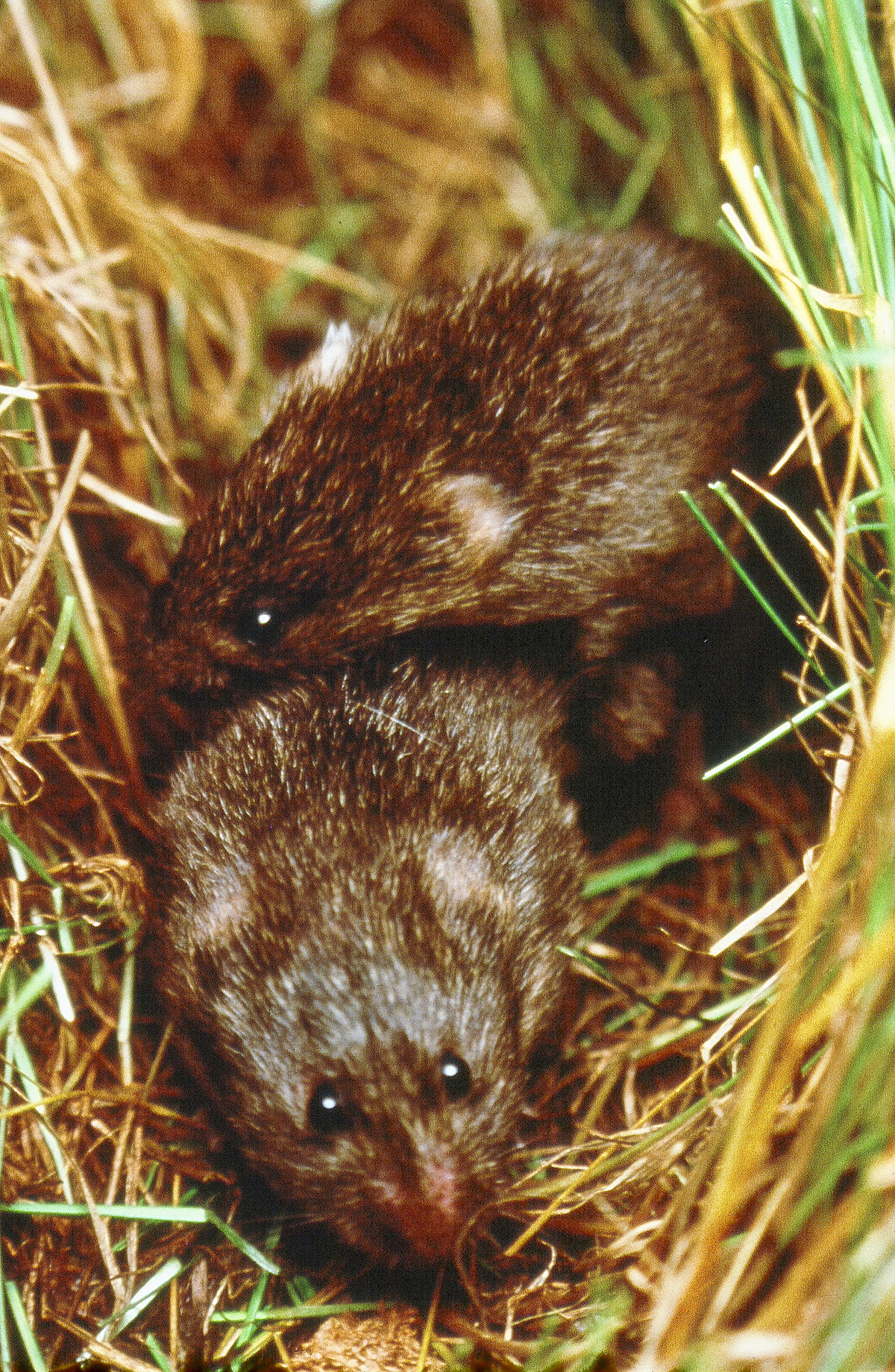
The biology of “love”: Lessons from prairie voles
by Nishat ChoudhurySue Carter, Director of The Kinsey Institute, discusses the fascinating nature of prairie voles and explains how they can teach us about the biology of “love”
In both nature and in the laboratory small field mice, called prairie voles form life-long social bonds. Males of this species are amazing parents involved in all aspects of care of the young except nursing. Males even help to “midwife” their partner’s labour and help her cut the umbilical cord at birth. Extended families form around the original pair, as prairie vole fathers and then older offspring remain in the natal nest, scrupulously avoiding incest. Males and females are about the same size and they jointly defend their family and resources. Taken together biologists have called this set of behavioural and physical traits “monogamy.”
The monogamy paradox
Because prairie vole pairs were sharing a nest and raising babies together, we initially assumed that they also were sexually monogamous. But when we tried to test this assumption, voles of both sexes did not cooperate – often mating with strangers. As DNA fingerprints became available, many prairie voles again failed the genetic tests for sexual monogamy. Similar findings emerged in other apparently monogamous mammals including humans, and most species of birds. Some individuals were sexually monogamous, but when viewed at the level of a species, sexual monogamy was rare or non-existent.
Given the opportunity, both male and female prairie voles were willing to have sex outside of the pair bond. However, once mating was complete, strangers or nonfamily members were often attacked. Like a reality TV show gone wrong, we discovered that male prairie voles were raising, as their own, babies fathered by other males. We slowly began to accept the notion that social attachments are real and have causes and consequences similar to what humans call “love.”
“I hope we don’t lose sight of one thing. It was all started by a mouse,”
(Walt Disney)
The term monogamy is derived from the Greek for a single wedding or ritual, and does not speak to sexual choices. Considered across the lifespan, many humans have more than one sexual partner. None of this is shocking. But we now understand that the traits of social monogamy are a kind of syndrome with shared neurobiological underpinnings. Our terminology had to be adjusted to admit that what we were observing was more accurately termed “social monogamy.”
Hormonal ties that bind
Prairie vole families are bound together by invisible social bonds. As we searched for a mechanism for social monogamy, we found in both male and female voles that pair bonds were cemented by powerful molecules synthesized in the brain. These hormones were released by social experiences, including sexual interactions and even the presence of a baby. In turn these brain-derived chemicals regulate social engagement, pair bond formation and parental behaviour. In addition, following mating, aggression toward strangers increased, and behaviours that looked suspiciously like “jealousy” emerged. However, as might be expected protective aggression toward intruders is based on a somewhat different cocktail of hormones than those needed to create loving relationships between pairs or directed toward a baby.
Two molecules, oxytocin and vasopressin, made primarily in the brain are at the epicentre of social monogamy. However, it has taken decades and the help of prairie voles to untangle these relationships. These deceptively simple molecules are capable of binding to each other’s receptors, creating various emotional states that support many behavioural permutations. In addition, oxytocin and vasopressin and their receptors are exquisitely sensitive to experience.

In fact, prairie voles are teaching us that the genes regulating receptors for oxytocin and vasopressin can be switched off or on across the life cycle. Life’s most important experiences – sexual experiences, birth, the presence or absence of sensitive parenting, exposure to hormones in early life, extreme stress and traumas – are all “epigenetic” events regulated by molecular changes with long lasting effects on the genome.
This is one of several mechanisms through which the consequences of love protect us across our lifespans, and through which the absence of love leaves us vulnerable.
Love heals and allows us to be human
Studies of prairie voles, and comparisons to nonmonogamous mammals forced us to re-imagine concepts like monogamy and love. Selective attachments, and well as parenting, are supported by a comparatively simple brain and ancient neural and endocrine pathways. Human cognition, a complex nervous system or even gonadal hormones are not essential to allow pair bonds to form or infant nurture to emerge. However, in voles – as in humans – these are influenced by social context including fear, safety, and the emotional history of the individual.
Social behaviours, such as pair bonding and parenting, are hormonally-supported and interact with emotions that facilitate good health, a sense of safety and eventually health and survival. Furthermore, nature is conservative and the same hormones are used over and over again across the life cycle and in different species of mammals, where they support variations in social behaviour and aggression across species and individuals, as well as sex differences in behaviour.
Brain regions involved in pair bond formation and parenting also are shared with other forms of rewarding experiences, and with the neural pathways involved in drug addiction. The absence or loss of love creates vulnerability to substance abuse, depression and other forms of mental and physical illness. Knowledge of these relationships helps to explain why love is rewarding, but also can be addictive, and why the loss of a partner or loved one may be experienced as physical pain or illness.
The absence or loss of love creates vulnerability to substance abuse, depression and other forms of mental and physical illness.
The biology of “love” is intertwined with the biology of reproduction and basic survival in a dangerous world. This is true of both voles and humans. Love and its consequences operate largely below the level of human consciousness. However, prairie voles have taught us that love is constructed from biological mechanisms that are shared with other mammals.
Using insights from prairie voles, we are discovering that the same molecules that support love facilitated human evolution, now allow us to survive and thrive, help create culture, and may even help to explain how and why “love is good medicine.”
Suggested reading
Oxytocin pathways and the evolution of human behavior. 2014
https://www.ncbi.nlm.nih.gov/pubmed/24050183
The oxytocin-vasopressin pathway in the context of love and fear. 2017
https://www.ncbi.nlm.nih.gov/pubmed/?term=Carter+love+and+fear
The monogamy paradox: What do love and sex have to do with it? 2018
https://www.frontiersin.org/articles/10.3389/fevo.2018.00202/full
Early nurture epigenetically tunes the oxytocin receptor. 2019
https://www.sciencedirect.com/science/article/pii/S0306453018306103?via%3Dihub
Love as medicine. 2019
http://edition.pagesuite-professional.co.uk/html5/reader/production/default.aspx?pubname=&edid=14e30abb-c333-43f5-b63d-31e069aee049&pnum=182
Director
The Kinsey Institute
Rudy Professor of Biology
Indiana University
Bloomington, IN 47405
cscarter@indiana.edu
*Please note: This is a commercial profile